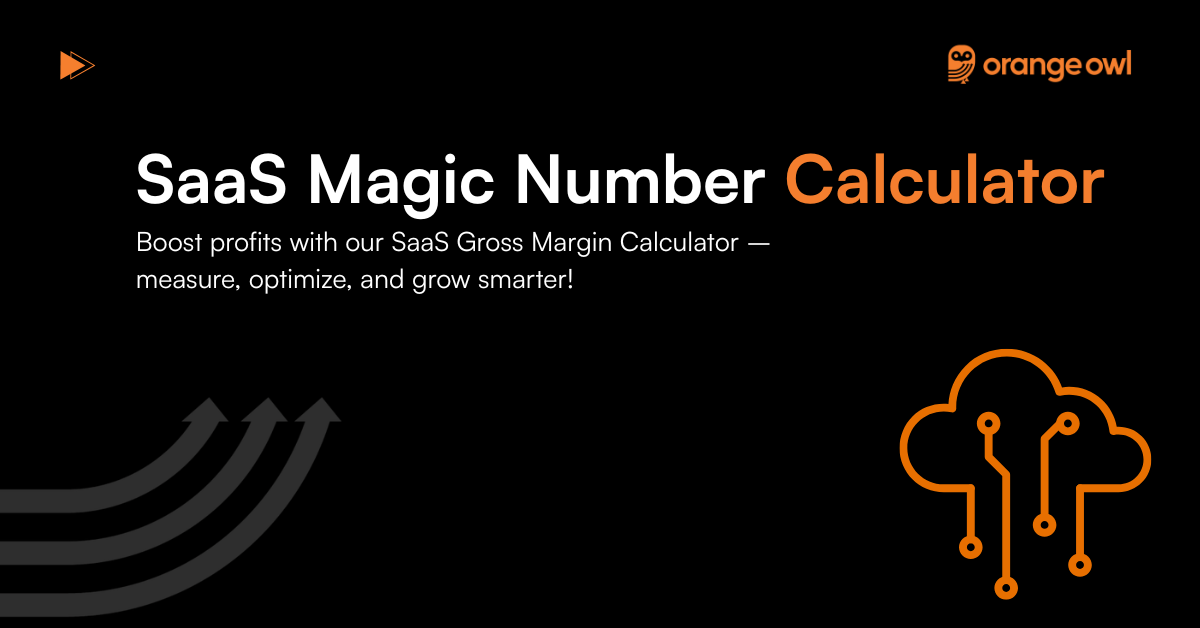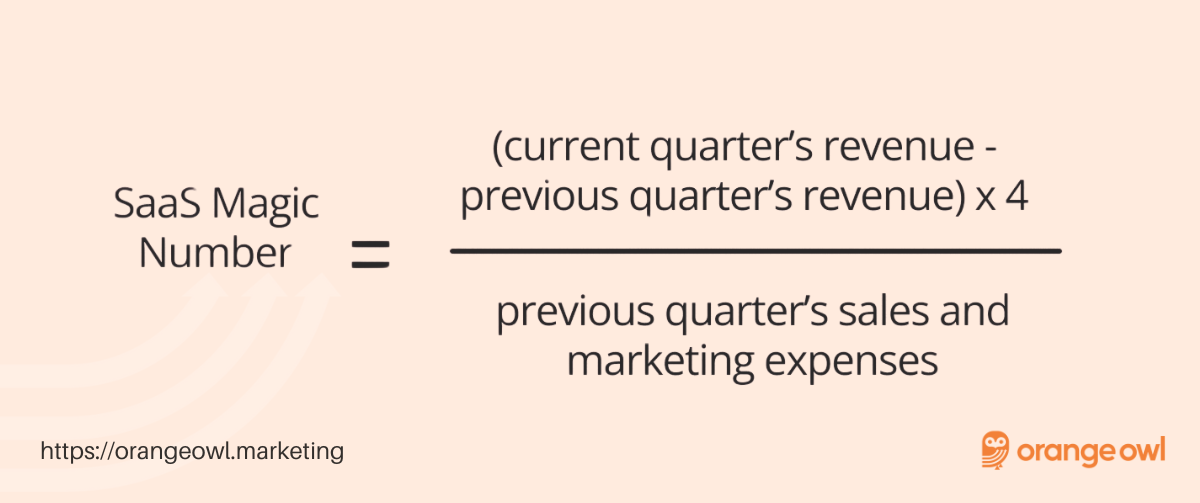SaaS Magic Number Calculator

Table of Contents
What is SaaS Magic Number?
The SaaS Magic Number is one of the most important metrics for subscription-based businesses. It measures how efficiently your company is turning sales and marketing spend into recurring revenue growth.
In simple words, the Magic Number tells you: “For every dollar you spend on acquiring customers, how much new revenue do you generate in the next quarter?”
For example, a Magic Number of 0.8 means you’re recovering 80% of your sales and marketing spend within a year. In contrast, a Magic Number of 1.0+ means your customer acquisition strategy is highly efficient and scalable.
It’s like your growth efficiency compass—guiding whether you should scale spending, optimise, or rethink your GTM strategy.
How to Calculate SaaS Magic Number
The formula is straightforward:
Magic Number = (Current Quarter’s ARR – Previous Quarter’s ARR) × 4 ÷ Previous Quarter’s Sales & Marketing Spend
 Example:
Example:
- ARR in Q1: $5,000,000
- ARR in Q2: $5,800,000
- Sales & Marketing spend in Q1: $2,500,000
Magic Number = (5,800,000 – 5,000,000) × 4 ÷ 2,500,000
= 800,000 × 4 ÷ 2,500,000
= 3,200,000 ÷ 2,500,000
= 1.28
👉 This means for every $1 spent on Sales & Marketing, your business generates $1.28 in new recurring revenue. That’s a strong signal of efficiency and scalability.
What’s a Good SaaS Magic Number?
There’s no “one-size-fits-all,” but here are benchmarks investors and operators often use:
- < 0.5 → Poor efficiency. Customer acquisition is too expensive relative to growth.
- 0.5 – 0.75 → Moderate efficiency. Needs optimisation before scaling spend.
- 0.75 – 1.0 → Healthy efficiency. The acquisition strategy is working well.
- 1.0+ → Excellent. Indicates strong product-market fit and scalability.
The closer you are to 1.0 or higher, the better positioned you are for sustainable growth.
Why SaaS Magic Number Matters
Tracking Magic Number helps you:
✅ Understand how fast you can scale sales and marketing.
✅ Align CAC payback periods with revenue growth.
✅ Benchmark efficiency against investor expectations.
✅ Spot inefficiencies in acquisition channels before scaling spend.
Without it, you risk overspending on growth or missing out on scale opportunities.
Metrics That Affect SaaS Magic Number
Your Magic Number doesn’t work in isolation. It’s influenced by:
- Customer Acquisition Cost (CAC): A Higher CAC reduces efficiency.
- Retention & Churn: Strong retention boosts recurring revenue.
- Expansion Revenue: Upsells and cross-sells improve ARR growth.
- Sales Cycle Length: Longer cycles delay revenue impact, lowering the metric.
What Can Bring Your Magic Number Down?
A declining Magic Number often signals:
❌ Overspending on underperforming channels.
❌ High churn is eating into new revenue.
❌ Inefficient onboarding or long ramp-up times.
❌ Misaligned sales and marketing efforts.
By diagnosing these factors, you can refine spending and improve efficiency.
How Teams Use SaaS Magic Number
For founders, growth leaders, and investors, the Magic Number acts as a scalability check:
- Founders: Decide whether to invest more in sales/marketing.
- Growth teams: Optimise acquisition strategies and retention levers.
- Investors: Gauge whether the company has efficient unit economics.
It’s often used in conjunction with CAC, LTV, and Gross Margin to gain a 360° view of SaaS health.
Using a SaaS Magic Number Calculator
Instead of crunching numbers manually, a SaaS Magic Number Calculator makes things easier. Just input:
- Last quarter’s ARR
- Current quarter’s ARR
- Last quarter’s sales & marketing spend
…and you instantly see your efficiency ratio. This helps validate strategy and guide future investment decisions.
How to Improve SaaS Magic Number
Boosting your Magic Number isn’t just about cutting spend—it’s about smarter growth:
🚀 Shorten sales cycles with better onboarding.
🚀 Increase expansion revenue with upsells and add-ons.
🚀 Improve retention with customer success programs.
🚀 Optimise ad spend and refine acquisition targeting.
Even small improvements can move your Magic Number closer to 1.0+, which investors love to see.
When Should You Use SaaS Magic Number?
Magic Number is most useful when:
- You’re actively scaling sales and marketing.
- You want to validate product–market fit.
- You’re preparing for fundraising and want to show growth efficiency.
- You’re comparing efficiency across different acquisition strategies.
It’s a strategic checkpoint that shows whether growth is worth accelerating.
How Orange Owl Helps You Improve Your SaaS Magic Number
At Orange Owl, we partner with B2B SaaS startups and growth-stage companies to improve their Magic Number. Through CAC optimisation, retention playbooks, and smarter growth strategies, we ensure every dollar spent on acquisition contributes to long-term recurring revenue.
We don’t just help you track the Magic Number—we help you move it upward, making your business more attractive to investors and more resilient in competitive markets.
Frequently Asked Questions (FAQs) on SaaS Magic Number
Early-stage SaaS may have unstable or misleading Magic Numbers due to rapid experimentation, while mature SaaS businesses use it as a reliable efficiency benchmark.
Yes, while designed for SaaS, Magic Number can be adapted for any recurring revenue model, including media subscriptions and marketplaces.
Seasonal spikes (e.g., Q4 enterprise deals) can inflate Magic Numbers temporarily. It’s better to track it on a rolling average for accuracy.
Outbound-heavy SaaS usually has lower Magic Numbers due to higher costs, while inbound-driven SaaS may show higher efficiency scores.
Yes. Over-optimizing for Magic Number may push companies to cut necessary investments in brand building, R&D, or customer success.
